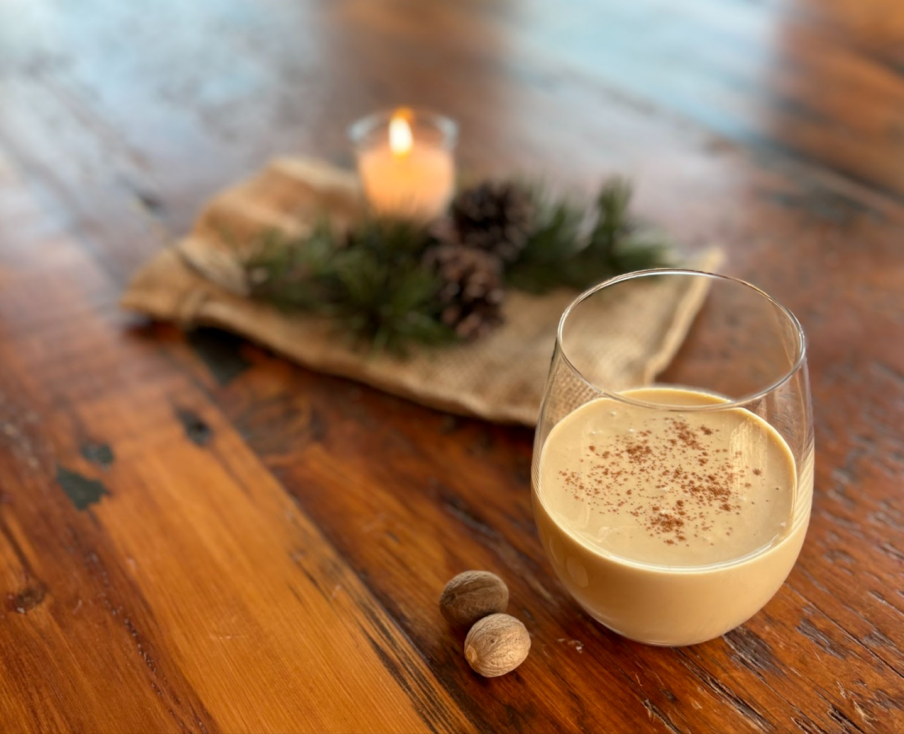Roasting a Turkey
posted on
November 6, 2024

It’s Thanksgiving Day! Guests are showing up soon, excitement is in the air, and the kitchen becomes alive with activity.
You may be wondering what to do with that turkey sitting in the fridge… when, at what temp, and how long to ROAST it for…
I (Bethany here!) started cooking our family Thanksgiving turkey when I was seventeen years old. Yeah, that first time was a little rough! But my family, as amazing as they all are, ate it anyway and let me try again the next year. Now, eight years later, there isn’t much turkey left from our Thanksgivings because everyone loves the moist, flavorful turkey! (Thanks Mom and Dad for putting up with those dry turkeys and letting me keep trying!)
Last week, we looked at brining a turkey. (If you didn’t see that post, click HERE to learn how to brine your Thanksgiving turkey!) This week, I’ll walk you through the process of roasting the turkey.
What you’ll need:
-1 whole turkey, brined or not (18.5 lb turkey was used for this post)
-Salt
-Seasonings of your choice (optional)
-Onions, carrots, and celery cut into large chunks (optional)
-Roasting pan
-2 Tbsp butter
-Meat thermometer
For a quick run-down on the steps, from frozen to roast:
- TUESDAY: pulled turkey out of the freezer to thaw
- WEDNESDAY: thawed turkey the rest of the way in cold water
- THURSDAY: brined the turkey
- FRIDAY:
- 8:00am -- Pulled the turkey from the fridge, drained the brine juices, placed into roasting pan
- 8:15am -- Let the turkey sit out for half hour to keep drying, set over to 325F
- 8:30am -- Melted the butter in a saucepan, brushed the butter onto the turkey skin, and sprinkled salt and/or seasonings on the turkey and inside its cavity
- 9:00am -- Popped the turkey into the preheated oven
- 9:30am, 10:00am, 10:30am, 11:00am -- Basted turkey with juices
- 11:30am -- Stuck thermometer into breast and leg to ensure it was at 165F, removed the turkey from the oven, and let it cool
- 12:15pm -- We ate the turkey!
Here's those same steps with more detail:
I pulled it out of the freezer on Tuesday, let it thaw for a day, and then thawed it the rest of the way in cold water on Wednesday. I then brined it on Thursday so it was ready for Friday (I made it for one of our team lunches on the farm, so I pulled it out of the fridge at 8:00 Friday morning). After draining all the juices from the brine, I placed it into the roasting pan and patted it dry with a paper towel. I also reserved the rosemary, thyme, garlic, and peppercorns from the brine and put those into the cavity. Then, I let the turkey sit out for a half hour to keep drying so I’d get a nice crispy skin while roasting.
While the turkey was drying, I set the oven temp to 325F. Then, I melted the butter in a small saucepan. After the turkey finished drying, I spread it on the turkey skin with a pastry brush. This step helped it brown nicely while roasting and added some yummy flavor! Then, I sprinkled some salt on the skin and inside the cavity. (Don’t use too much here if you brined the turkey as the skin will already have absorbed some saltiness…you could even skip the salt if you brined.) Then if you wish, you could sprinkle seasonings of your choice on the turkey. I usually would do garlic powder, onion powder, smoked paprika, and pepper, but some of our team had different allergies so I stuck with just salt for this time. I also didn’t add any vegetables to the cavity for the same reason, but that definitely adds a nice touch!
At 9:00am, I popped the turkey into the preheated oven. Every half hour, I used the pastry brush to baste the turkey with the juices, but otherwise, I was free to work on prepping the other food for our team lunch. I allowed for 8-10 minutes per lb of turkey, and it was finished around 11:30 (about 8 minutes per lb). I stuck the thermometer into both the breast and the leg…I needed it to be 165F for a safe level of doneness, but no more as I didn’t want a dry turkey! All parts of the turkey were at that temp when I inserted the thermometer. If the legs happen to not be quite done yet for you, you can carve those off to keep roasting, but make sure to remove the rest of the turkey to avoid drying it out by overcooking.
I let the turkey cool off for a bit before removing it to a serving platter and reserving the drippings from the pan for my gravy. And ta-da! We had an amazing roasted turkey that the team devoured.
Want to try this out for yourself?
Grab one of our pasture-raised turkeys HERE for the best Thanksgiving turkey you’ve ever had!
If you want to see the full recipe in case you missed one of our previous blog posts, click HERE!
Next week, I’ll show you how exactly to use those turkey giblets. Maybe you’re a bit hesitant to use them - trust me, I was too! But I’ll show you just how delicious and healthy of a giblet gravy you can make, so stay tuned!
Cheers to you and your health!
~Bethany




